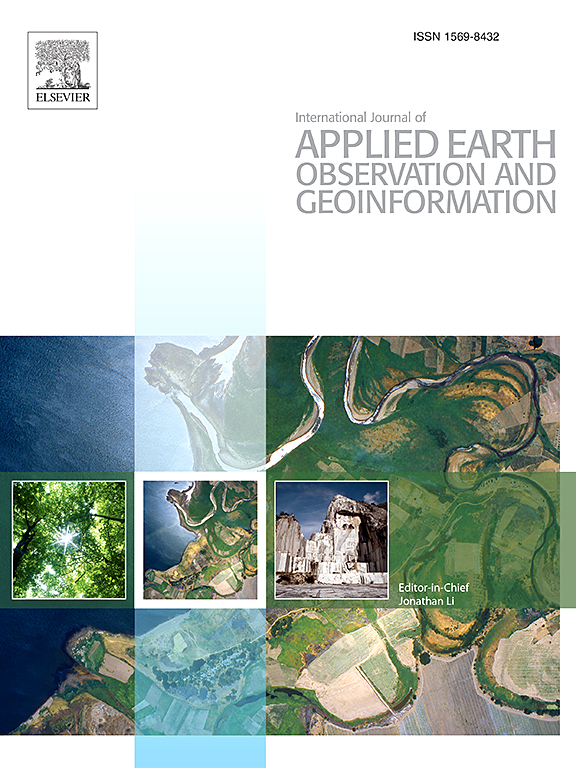Online calibration of LiDAR-camera extrinsic parameters of tunnel mapping system with depth-constrained vibration compensation
IF 7.6
Q1 REMOTE SENSING
International journal of applied earth observation and geoinformation : ITC journal
Pub Date : 2025-05-01
DOI:10.1016/j.jag.2025.104556
引用次数: 0
Abstract
Tunnel mapping systems are essential for tunnel inspection, integrating sensors like LiDAR, cameras, and odometers to enhance data accuracy. However, calibration is challenging due to mechanical constraints and repetitive sensor installations, especially for LiDAR-Camera alignment. Existing methods struggle in tunnels with poor lighting and low texture, and they fail to address irregular vibrations from the flashing light system, causing instability. We propose a robust online calibration technique for LiDAR-Camera extrinsic parameters. By establishing a reversible mapping through surface parameterization, our approach ensures accurate cross-modality alignment. Additionally, we use depth constraints to stabilize adjacent camera stations, which are typically short-edge connections and prone to instability in photogrammetric bundle adjustment. This effectively mitigates irregular vibration effects. Validation in real-world tunnels confirms persistent vibration issues despite mechanical reinforcement. Our algorithm achieves precise point cloud and image alignment, reducing back-projection errors by over 50% and significantly improving data fusion accuracy in challenging conditions.
基于深度约束振动补偿的隧道测绘系统激光雷达-相机外部参数在线标定
隧道测绘系统对于隧道检查至关重要,它集成了激光雷达、摄像头和里程表等传感器,以提高数据的准确性。然而,由于机械限制和重复的传感器安装,校准是具有挑战性的,特别是对于LiDAR-Camera校准。现有的方法在光线不足和纹理较低的隧道中很难使用,而且它们无法解决闪烁系统产生的不规则振动,从而导致不稳定。提出了一种鲁棒的激光雷达相机外部参数在线标定技术。通过曲面参数化建立可逆映射,我们的方法确保了准确的跨模态对齐。此外,我们使用深度约束来稳定相邻的摄像站,这些摄像站通常是短边连接,在摄影测量束调整中容易出现不稳定。这有效地减轻了不规则振动的影响。在实际隧道中的验证证实,尽管进行了机械加固,但仍存在持续的振动问题。我们的算法实现了精确的点云和图像对齐,将反向投影误差减少了50%以上,并显著提高了具有挑战性条件下的数据融合精度。
本文章由计算机程序翻译,如有差异,请以英文原文为准。
求助全文
约1分钟内获得全文
求助全文
来源期刊

International journal of applied earth observation and geoinformation : ITC journal
Global and Planetary Change, Management, Monitoring, Policy and Law, Earth-Surface Processes, Computers in Earth Sciences
CiteScore
12.00
自引率
0.00%
发文量
0
审稿时长
77 days
期刊介绍:
The International Journal of Applied Earth Observation and Geoinformation publishes original papers that utilize earth observation data for natural resource and environmental inventory and management. These data primarily originate from remote sensing platforms, including satellites and aircraft, supplemented by surface and subsurface measurements. Addressing natural resources such as forests, agricultural land, soils, and water, as well as environmental concerns like biodiversity, land degradation, and hazards, the journal explores conceptual and data-driven approaches. It covers geoinformation themes like capturing, databasing, visualization, interpretation, data quality, and spatial uncertainty.
 求助内容:
求助内容: 应助结果提醒方式:
应助结果提醒方式:


